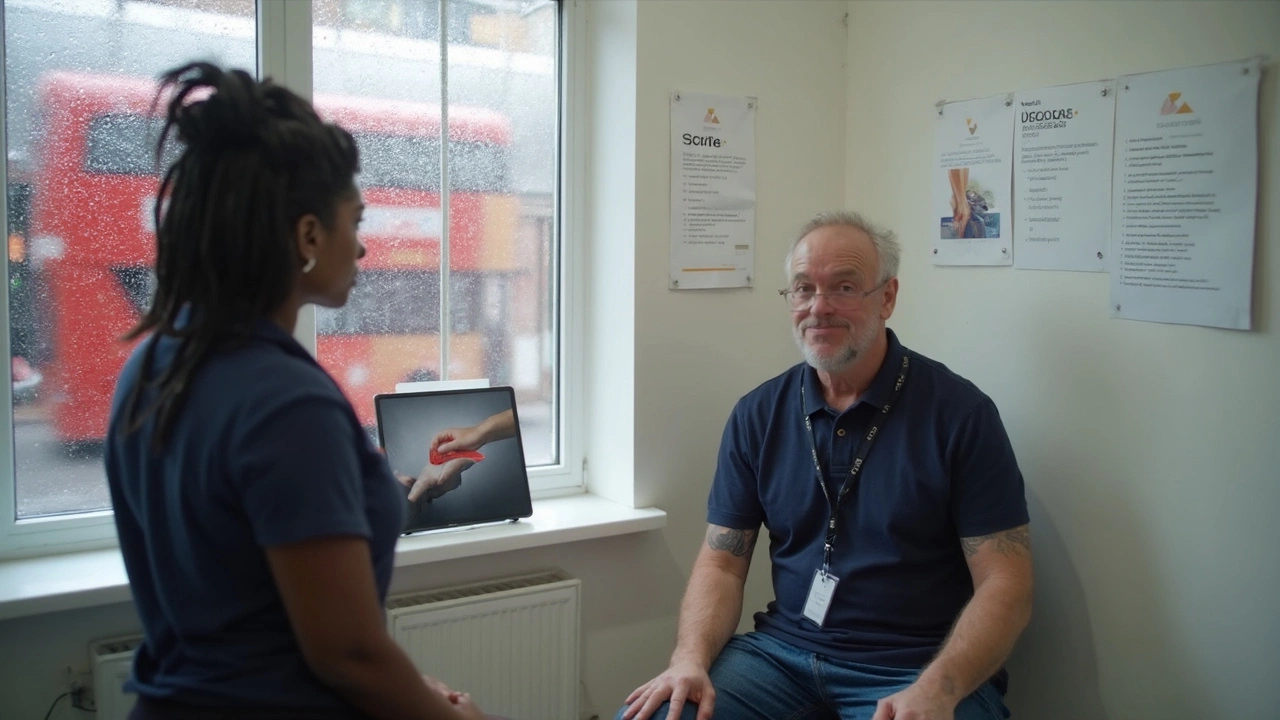Myofascial Release Therapy: What It Is and Why You’ll Want to Try It
If you’ve ever felt a knot in your back or tightness after a long day, you’ve probably heard of myofascial release. It’s a hands‑on technique that slows down, stretches, and eases the connective tissue (the fascia) that wraps around muscles. When fascia gets stuck, you feel pain, limited range of motion, and general stiffness. Releasing it can bring back smooth movement and a sense of lightness.
What Is Myofascial Release?
Think of fascia like a thin sheet that covers every muscle, bone, and organ. When you sit too long or lift heavy things, that sheet can develop adhesions—tiny spots where it sticks to the underlying tissue. Myofascial release works by applying gentle, sustained pressure to those spots, encouraging the sheet to glide again. The result is less pain, better blood flow, and more flexibility.
How to Try Myofascial Release Safely
You don’t need a fancy clinic to start. A foam roller, a tennis ball, or a small massage ball can do the job. Pick a firm but not painful pressure, roll slowly over the tight area, and pause for 30–90 seconds where you feel a “good‑pain” stretch. Breathe deep, stay relaxed, and avoid rolling over bones or joints directly.
If you prefer a professional touch, look for a licensed therapist who lists “myofascial release” in their services. During a session they’ll use their hands, elbows, or tools to locate and treat the adhesions. A typical appointment lasts 45–60 minutes and focuses on the areas that need the most work.
When you start out, limit sessions to 10‑15 minutes per body part. Over‑working fascia can cause temporary soreness, which is normal, but it shouldn’t be sharp or last more than a day. Drink water afterward; it helps flush out the released toxins and keeps the tissue hydrated.
People love myofascial release because it tackles the root cause of many aches—tight fascia—rather than just masking symptoms. Athletes use it to improve performance, office workers find relief from neck and lower‑back pain, and anyone dealing with chronic tightness can benefit.
To keep the gains, add a short self‑release routine to your daily habit. Ten minutes in the morning or after a workout is enough. Pair it with gentle stretching for the best results. Consistency is key; the fascia will stay supple when you treat it regularly.
In short, myofascial release is a simple, low‑cost way to unlock stuck tissue, boost mobility, and feel less sore. Whether you use a foam roller at home or book a session with a qualified therapist, the technique is easy to learn and delivers real relief. Give it a try and notice how quickly your body starts moving more freely.
Myofascial Release Therapy for Physical Therapists: Techniques, Evidence, Protocols
Clear, evidence-backed guide for PTs on myofascial release: when to use it, how to apply it, dosing, safety, documentation, and patient self-care that sticks.
